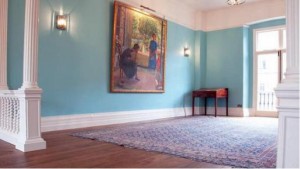We’re now coming to the end of the third week of the Autumn term, and I hope you’re all settling into your new courses and/or programmes of study. I promised in my last (and first!) blog that I would tell you something about our building, the School of Arts in Gordon Square, but a couple of news items before I do…
* Leslie Topp, Zoe Opacic and Tag Gronberg organise a network on Architecture, Space and Society – and they have a wonderful site I’d highly recommend looking at: http://assnbbk.blogspot.co.uk/. Their next event is coming up on Thursday 23rd October, 2-5pm – a symposium called ‘Skylines: The Aesthetics of Ascension’, which will explore the aesthetics and politics of height, skylines, and views from above, across periods and geographies.
* not one but two members of the department are involved in a symposium on Tuesday 4th November at Tate Britain: ‘”A Poor Man’s Picture Gallery”: Art and Stereoscopic Photography’. This accompanies an exhibition of nineteenth-century stereoscopes from the collection of Brian May (The Brian May, formerly of Queen!). Patrizia di Bello will be giving a paper, and Lynn Nead will be chairing the plenary discussion.
* * * * *
The following account of our building is heavily indebted to the work of others – Patrizia, our resident expert on the Bloomsburys – Leslie, who had us on the tourist trail in the Open House weekend last year – and Victoria McNeile, who did her PhD in English here at Birkbeck, and put together a valuable fact sheet for that weekend.
Gordon Square was developed as part of the Bedford Estate in the early nineteenth century, and was the work of one Thomas Cubitt. Our section of the eastern terrace was completed by 1830, and it’s now Grade II listed.
It’s hard to imagine today, but, in the nineteenth century, Bloomsbury was not a fashionable address. However, by the turn of the twentieth century, artists and bohemians were moving into the area and, as a result, it attracted the Stephen siblings – Vanessa, Virginia, Thoby and Adrian – in 1904. For Virginia (so much better known by her married name, Virginia Woolf), it represented an exchange of the ‘respectable mummified humbug’ of Kensington, the Stephens’ previous family home, for ‘life crude and impertinent perhaps, but living’ then to be found in Bloomsbury. The family moved into number 46. At that time, there was kitchen/servant accommodation in the basement, a dining room and two studies on the ground floor, a large L-shaped drawing room on the first floor, and bedrooms and individual sitting rooms at the top of the house.
The first of the Bloomsbury Group’s Thursday ‘evenings’ took place in 1905: gatherings which included Clive Bell, who Vanessa married in 1907, and Leonard Woolf, who became Virginia’s husband in 1912. Other members included Lytton Strachey (he lived nearby, at no. 51), Duncan Grant, Roger Fry and John Maynard Keynes, the celebrated economist and intellectual.
Keynes later moved into number 46, with his wife, the Russian ballerina Lydia Lopokova. He leased the house next door, 47, for his books – hence the ‘Keynes Library’ on the first floor of that building, which students who have been with us for a while will know well, and where new students will very possibly have enjoyed a glass of wine on their induction evening! The paintings which, hopefully, as good art historians, you have all diligently scrutinised, are by Vanessa Bell and Duncan Grant, and are on loan to Birkbeck from Bell’s daughter, Angelica Garnett.
In a later blog, I’ll tell you about our striking, modern and award winning extension on the basement level of the School of Arts building, undertaken by Surface Architects in 2007. Quite a contrast!


